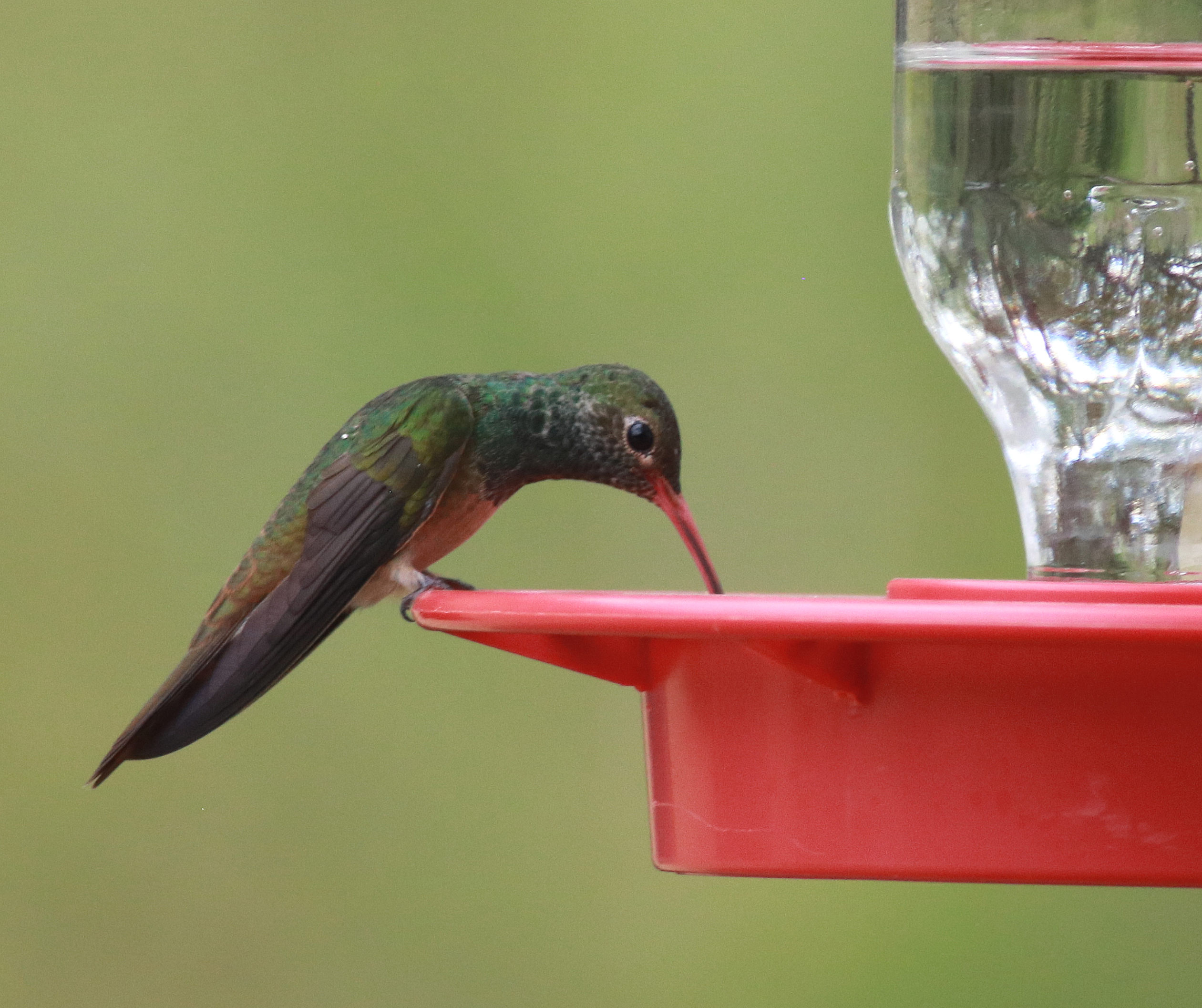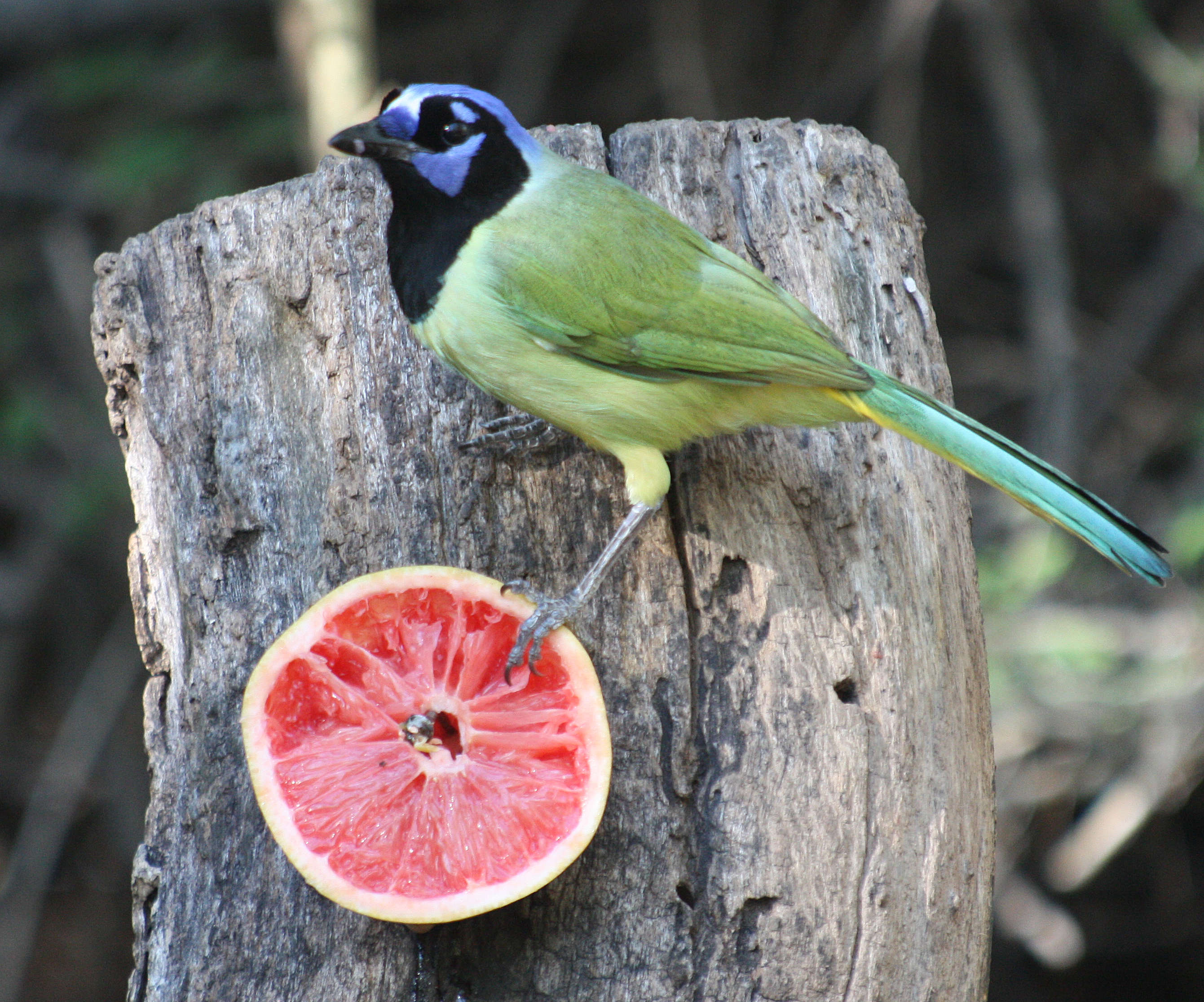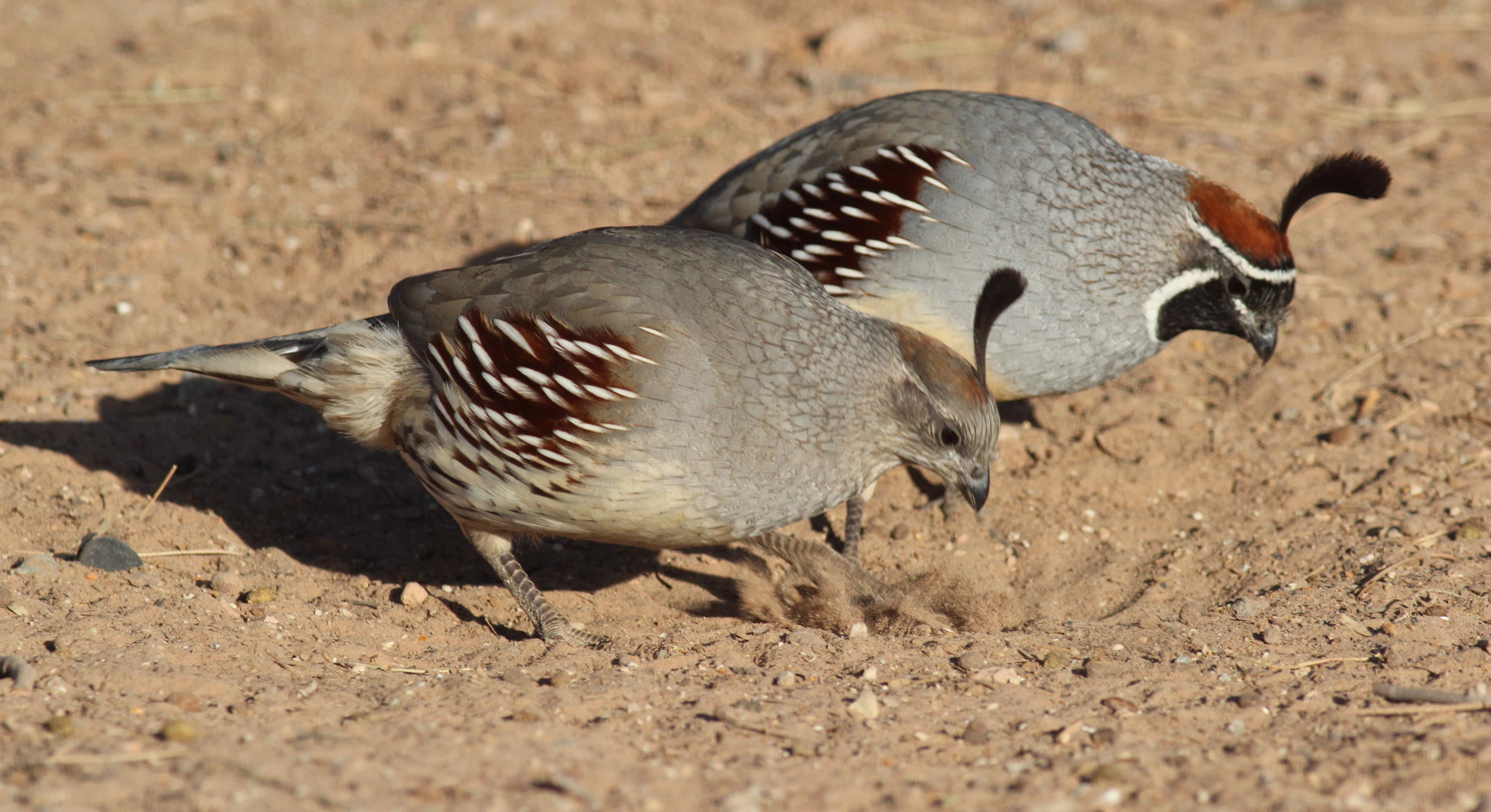
Along coastal areas of Texas and Louisiana, you may have Buff-bellied Hummingbirds visiting your nectar feeder regularly.

What a thrill to have Green Jays in your Texas neighborhood and visiting your feeding station (all photos by Paul Konrad).

Gambel’s Quail may be the most likely quail to find a ground-based seed feeder, although a variety of birds will utilize this option including doves, native sparrows, and towhees.

It is always fun to see Common Ground Doves close, to appreciate their coloration and their small size; note the Mourning Dove in the background to compare their sizes.
|
Many birders who live or winter along the southern tier of states can enjoy continuing to see local hummingbirds and woodpeckers along with wintering warblers, thrushes, native sparrows, and resident species of quail and doves, along with an exciting potential of other birds using your feeding station and water feature. Even now, there are new species arriving as fall migration progresses, and for sunbelt residents, it’s business as usual, although you may be beefing up your seed feeders and adding a no-melt suet option.
In addition to the winter foods provided by birders in northern states and provinces, birders living or wintering in warmer parts of our southern states have a few more options. Sugar-water nectar is the obvious offering northern birders pack away until April, but hummingbirds are a year-round segment of the avifauna in places like southern California, along with parts of southern Arizona and southern Texas.
Anna’s Hummingbirds are common in southern California, and watch for Costa’s Hummingbirds in desert areas too, especially after the new year. Anna’s and Costa’s are fairly common in southwest Arizona too, and actually, winter is the prime nesting season for Anna’s Hummingbirds, synchronized with the advent of the rainy season, which begins as early as December and continues into June. To the east, Buff-bellied Hummingbirds are resident in southern Texas along the Gulf and continuing into coastal Louisiana.
In other areas of the Sunbelt, nectar feeders are known to attract a rare sighting of an off-course species, potentially a hummingbird from Mexico or other points to the south. That’s a possibility in any Sunbelt state; and a nectar feeder may attract a hummingbird that is staying north of its winter range longer, or even overwintering in the sunbelt. Louisiana has become an impressive example of a home for wayward hummingbirds during winter in recent years, with as many as 8 different species being documented in the state some winters. And don’t worry, providing late-fall and winter nectar won’t prevent hummingbirds or any other species from migrating, and some lingering orioles and House Finches will appreciate sugar-water nectar too.
Altamira Orioles are full-time residents of southern Texas, but most orioles migrate south of the American border with the exception of some Baltimore Orioles that overwinter across the Florida peninsula. In these areas where orioles are present, you will want to provide grape jelly and sliced oranges to attract colorful orioles, and it’s worth providing these foods as some other birds may feed on the oriole preferences too. If you attract other fruit eaters, it’s worthwhile to try adding a few grapes or blueberries, maybe a couple slices of a banana or a halved apple to see if there are any avian takers.
Quail & Doves
In some drier areas of the Southwest, some birders like to concentrate on feeding local quail, that can vary from California Quail and Gambel’s Quail in the far west, to Scaled Quail and even Montezuma Quail for exceptionally lucky birders that have these impressive quail on hand. Farther east, some lucky birders are also able to attract Northern Bobwhites. Quail are ground-oriented birds, so it’s a good bet to try providing a mix of seeds on the ground or at ground level. When you have quail feeding, note which seeds they prefer – and be sure to include safflower seeds in the initial mix to see how quail react to them. Water can be an even bigger attraction for quail, especially in drier areas of the country.
When you attract quail, or even if you don’t, there is a pretty good chance you may be able to attract native doves using the same techniques as you do for quail. In addition to ground feeding, doves will also visit a platform feeder, especially a larger-sized platform with seeds. Watch for White-winged Doves, Inca Doves, Common Ground Doves, and Mourning Doves, depending on where you are located in the Sunbelt.
Native sparrows and towhees will also be attracted to ground-level seed offerings, as will juncos and others. A special thrill for some birders in the Southwest is to have Abert’s Towhees visiting their feeding station, or maybe Green-tailed Towhees or California Towhees, while there will be a chance of attracting Fox Sparrows, Golden-crowned Sparrows, Harris’s Sparrows, Lincoln’s Sparrows, and others wintering from the north – snowbirds.
In addition to the many people who are year-round residents in the American Sunbelt, there are many people who spend their winter in the warmer southern tier of states, some for half the year, some for a month or more. If you are a snowbird getting a break from the northern winter, don’t hesitate to see what kinds of birds you find in your wintering range by setting up a feeding station with water access. And for RV travelers who spend time in a couple or a few locations, it’s always fun to see what birds will visit an easy to set up, easy to take down bird feeding station with a platform feeder, a suet cage, and a nectar feeder. It’s a great way to be introduced to new birds.
Keep Them Filled
Wherever you spend the coming winter months, give your feeding station a little daily attention. It may simply be a matter of checking to see if there is ample food and fresh water, and when appropriate, topping them off. We like to suggest not to let a feeder to become empty before filling it, and the same applies for your water dish or birdbath: “Fill feeders and bird baths before they are empty,” we always say.
Overall, everyone has a little different situation with different habitats surrounding their feeding station, including urban and suburban habitats, and more natural habitats. These variations can create different bird communities at locations just a dozen miles apart, much less across a state or the continent. The key is to provide the foods that will attract the birds you most want to share your yard and feeding station with. Enjoy the season – the holidays are about to begin with Thanksgiving approaching next week – and enjoy the birds around you whether you are north or south, west or east!
Share your backyard birding experiences and photos with The Birding Wire at editorstbw2@gmail.com